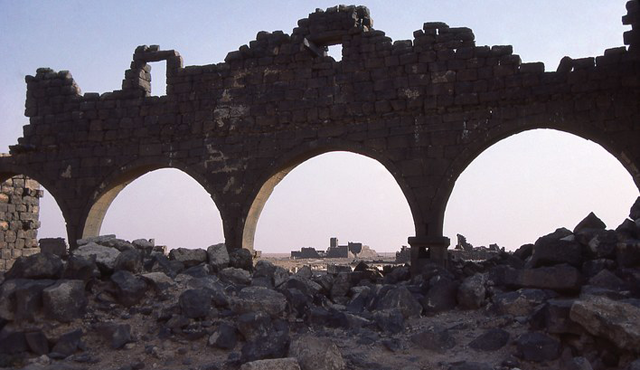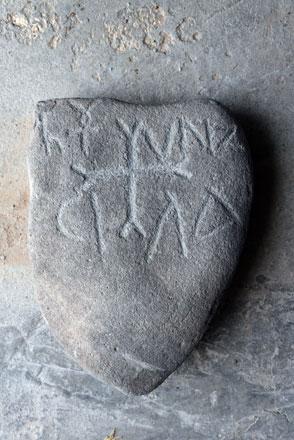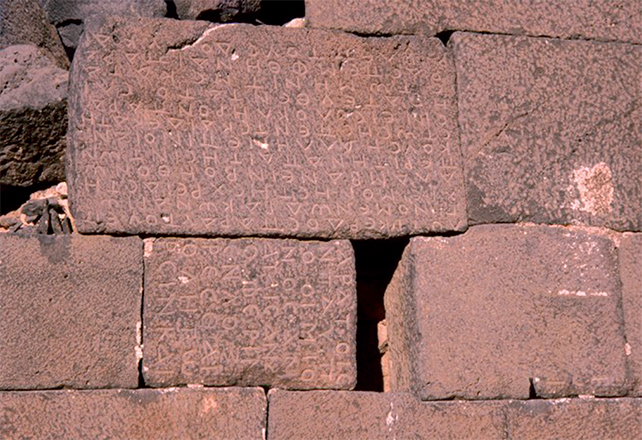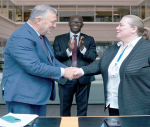You are here
French scholar tries to decipher ancient Greek, Latin inscriptions in Jordan
By Saeb Rawashdeh - Nov 25,2017 - Last updated at Nov 25,2017
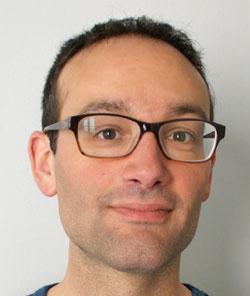
Julien Aliquot
AMMAN — Remains of ancient houses and funerary inscriptions from the Roman period have been found in Dafyana, a site located in southern Hawran, about 20km east of Umm Al Jimal, slightly away from the ancient Roman road leading from Azraq to Bostra, according to a French scholar.
The archaeological site is integrated within the boundaries of the modern village, he continued, adding that it has been explored by several travellers and scholars since the end of the 19th century, said Julien Aliquot in a recent email interview with The Jordan Times.
Since 2013, Aliquot has been involved in the joint French-Jordanian project of the “Inscriptions de la Jordanie” (Greek and Latin Inscriptions in Jordan).
Nabil Bader already gathered 11 Greek funerary inscriptions from Dafyana in his book, “Inscriptions de la Jordanie, Volume 5.1” (published in 2009), the French scholar said, adding that more recently Dafyana was investigated again by the Mafraq branch of the Department of Antiquities (DoA), which led to the discovery of previously unknown Roman tombstones, about 150 metres to the west of the village.
“Most of the inscriptions are simple epitaphs engraved on basalt stelae, similar to previously known inscriptions from the same region,” Aliquot explained.
Regarding the burial practices of that time, cremation was not in use, except in the Roman army, the historian said.
“Most people could only afford a very simple burial, such as a pit grave,” he claimed, adding that the richest had monumental tombs built in the form of towers, sometimes associated with dovecots.
The ancient cities and villages of Hawran also delivered hundreds of tombstones inscribed in Greek on basalt stelae, which are dated between the 2nd to the 7th centuries AD.
Furthermore, these documents provide invaluable information on settlement history and burial customs in the southern part of Hawran during the Roman and Byzantine period, the researcher emphasised, as they reveal the Semitic, Greek and Latin names of the deceased, their professions, family relationships, etc.
“Some of them are little poems, written locally, that show the progress of Hellenism in the northern part of the Roman province of Arabia. From the 4thcentury onwards, the appearance of Christian symbols and formulas shows the advent of the Christian faith in the region,” Aliquot underlined.
On the other hand, the epigraphic material does not make it possible to estimate the number of inhabitants in each agglomeration, but it reflects to some extent the distinction between towns (e.g. Bostra, the capital of the Roman province of Arabia, or Gerasa) and villages within the boundaries of civic territories (e.g. Dafyana, within Bostra’s ancient territory), the scholar continued, stressing that the collective tomb of Dafyana is particularly worthy of note in this respect.
“The Greek inscription that was found inside [and now preserved in Mafraq] records the foundation of this tomb by a junior officer of the Roman army who died in the Black Sea region, but whose body was carried home for burial by his servant in 312/313 AD,” he said.
While emphasising the role of Hawran as a recruitment pool for the Roman army and administration, this text increases the number of documents which provide evidence regarding transportation of dead soldiers’ remains to their homeland, Aliquot pointed out.
Regarding future plans, the researcher stated that the study of the new Greek epitaphs from Dafyana encourages researchers to pursue their fieldwork in northeast Jordan.
In most of the museums, stores, and sites which have already been visited, the work can be considered completed, he said, but there are still unknown sites and inscriptions which deserve “further investigation”.
“More generally, in the upcoming period, the team of the ‘Inscriptions de la Jordanie’ also wishes: to deepen its cooperation with the DoA; to speed up publications thanks to the support of the French Institute for the Near East [Ifpo]; to foster a fruitful collaboration with Jordanian universities and research institutes, especially Yarmouk University in Irbid,” Aliquot underlined.
Related Articles
AMMAN — In 1996, a team of archaeologists discovered a Greek inscription in the tomb near the village of Dafyana, in northern Jordan, locate
AMMAN — Khirbet es-Samra, an archaeological site located some 50 kilometres north of Amman, contains the world’s only Aramaic-inscribed
AMMAN — The Jordan Museum, located in a very busy area of Ras Al Ain, is home to many inscriptions from various parts of the country.


